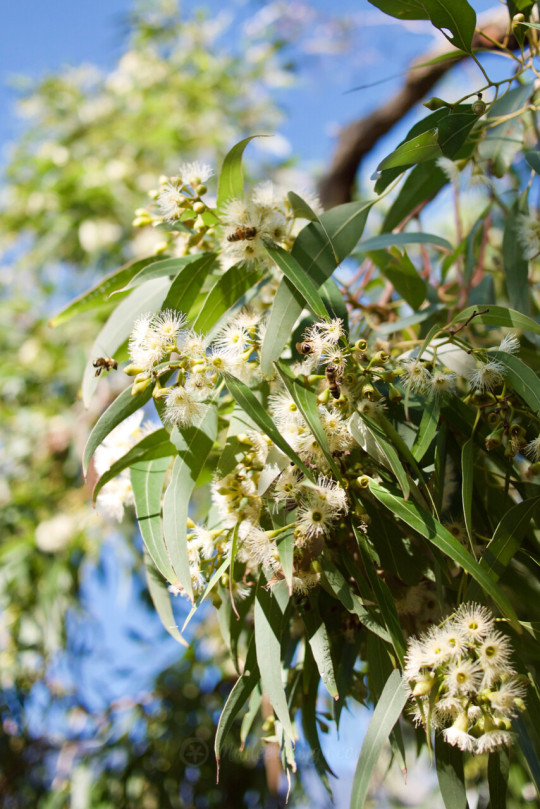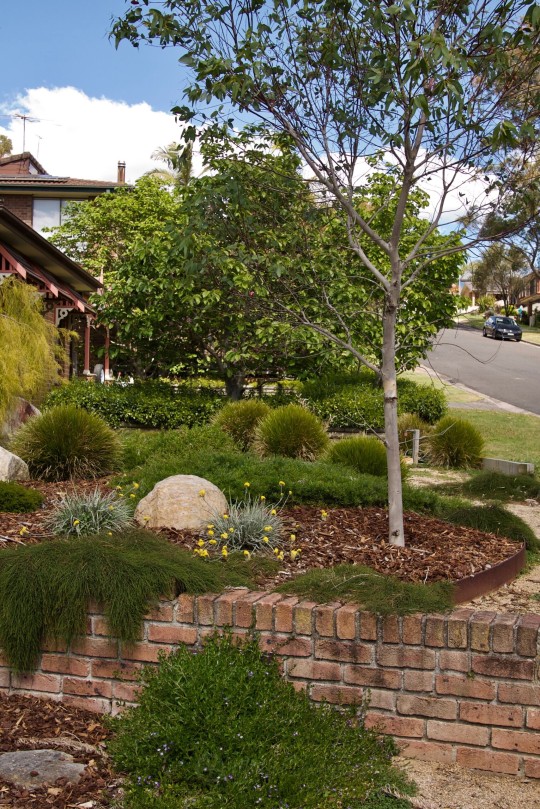#Conostylis candicans
Explore tagged Tumblr posts
Photo

New Post has been published on http://malleedesign.com.au/bee-friendly-gardening/
Bee Friendly Gardening
Bees play an important role in our ecosystem and we rely heavily on them to pollinate our food crops and our native bushland, not to mention supply us with delicious honey.
There are over 1,500 native bee species in Australia with a whole host of interesting shapes and forms. Bees feed on nectar nestled within flowers, provide pollen to raise their young, and play an absolutely crucial role in pollinating plants as they hop from flowerbud to flowerbud. Sadly, native bees are declining or have gradually been displaced. This has led to a reduction in native flora pollination and an increase in the pollination of weeds.
A small native bee (bottom right) visiting the native wattle Acacia podalyriifolia
There has also been an sharp decline in honey bee colonies around the world in recent years, and the reasons for the drop remain largely unknown.
Some natives like the blue-banded and carpenter bees do a special type of ‘buzz pollination’ where they wrap themselves around a flower and vibrate their bodies so that the hidden pollen capsule explodes out of the flower like fireworks!
Whereas some pollinators only require nectar and/or pollen for part of their lives, bees need these honey ingredients throughout their adult and larval stages. To accumulate one kilogram of honey, bees will have pollinated a million individual flowers and flown over 50,000 kilometres.
We can all do our bit to support these pollinators. Why not plant flowers rich in nectar, which will help bees find the food they need?
A native bee on Moraea robinsoniana – a large strappy-leaved lily
The first thing I think about when creating an attractive habitat for bees is plants with different flowering seasons. This makes sure there’s a constant source of nectar for nearby colonies and all year round bee activity. Native stingless bees (Tetragonula) only forage close to their hive so having year-round flowering plants is essential for attracting this species and great for many other species too. At the end of this post is a list of native plants, grouped by flowering season, that are great for attracting bees to the garden.
I also consider the colours of the flowers I’m putting in the garden. Bees have a different range of colour vision to humans, they can’t see red but can see all the way into the ultraviolet spectrum and distinguish between individual flowers much more readily. They are particularly good at locating blue-like hues so plants with violet, blue, purple, mauve, white (white flowers are often overlayed with UV patterns) and yellow flowers are very attractive to them. Not to mention the other insects, butterflies, beetles, wasps and crawling critters that are attracted to these colours and will additionally pollinate lots of flowering plants!
Honey bee on the purple blooms of Eremophila nivea ‘Gulburra Bells’
Something that’s not as often considered when creating bee habitat is their thirst – on a hot day a colony of bees can drink over a litre of water between them. Water sources that aren’t too deep (bees will easily drown if they fall into deep water) and have floating platforms like sticks, cork and leaves are a good idea to have placed somewhere in the garden, maybe under some shade, so the water doesn’t evaporate too easily.
Another interesting thing about bees is that some have longer tongues or specific bodies that are able to pollinate tubular or bell-shaped flowers found on plants like Emu bush (Eremphila) above, Correas and Epacris sp. Other bees have short tongues and are specialised at pollinating shallow-cupped flowers such as those of Eucalypts – the honey bees in the photo below are loving Eucalyptus citriodora ‘Baby Citro’ Grafted.
Honey bee on Eucalyptus citriodora ‘Baby Citro’ Grafted
The whole bunch of factors to consider when planting a garden for bees – flowering seasons, flower colours, shapes and forms, as well as water – might sound overwhelming, but creating habitat for bees starts to happen almost organically when you start paying attention to just one or two of these most of the time. I find it easiest to start with flowering season so summarised here are some of my favourite native plants to inspire bringing more bees to the garden.
Honey bee on Banksia oblongifolia
Seasonal Flowering Plants for Bees
Note that for some of these plants the flowering time will cross over multiple seasons. I’ve put the main season of flowering in the categories.
Long or All-year Flowering
Scaevola sp.
Philotheca difformis ‘Starspite’
Brachyscome sp.
Bracteantha sp.
Myoporum parvifolium
Goodenia ovata
Ozothamnus disomifolius
Viola hederacea
Summer Flowering
Lomatia sp. (e.g. Lomatia silaifolia in the photo below)
Lambertia formosa
Phebalium squamosum
Plectranthus sp.
Jasminium suavissimum
Viminaria juncea
Honey bee on Lomatia silaifolia
Autumn Flowering
Correa alba
Correa glabra
Persoonia pinifolia
Lambertia formosa
Melaleuca thymifolia
Banksia spinulosa
Hakea laurina x petiolaris
Winter Flowering
Eucalyptus paniculata (May – Feb)
Eucalyptus leucoxylon (May – Sept)
Banksia sp.
Bauera rubioides
Dampiera stricta
Epacris sp.
Guichenotia macrantha
Senna artemisoides
Tecomanthe hillii
Thryptomene sp.
Spring Flowering
Conostylis candicans
Prostanthera sp.
Micromyrtus ciliata
Gahnia siberiana
Hardenbergia violacea
Hibbertia sp.
Olearia sp.
Tetratheca ciliata
Honey bee on Angophora hispida
Happy planting,
Hannah and Kath
#Angophora hispida#Autumn Flowering#Banksia oblongifolia#banksia spinulosa#Bauera rubioides#bee attracting#blue flower#blue-banded bees#Brachyscome sp.#Bracteantha sp.#carpenter bees#Conostylis candicans#Correa alba#Correa glabra#Dampiera spps#Eucalyptus leucoxylon#Eucalyptus paniculata#Gahnia sieberiana#Goodenia ovata#Guichenotia macrantha#Hakea laurina#Hardenbergia violacea#Hibbertia sp.#Jasminum suavissimum#Lambertia formosa#Lomatia myricoides#Lomatia silaifolia#long flowering period#Melaleuca thymifolia#Micromyrtus ciliata
0 notes
Photo

New Post has been published on http://malleedesign.com.au/portfolio-helensburgh-consult/
Portfolio: Helensburgh Consult
Front gardens play such an important role in most streetscapes but especially in suburbia where the repetition of built form and front lawns can become almost claustrophobic. These clients wanted something different to look out on from inside of their home but also a welcoming garden on arrival home from work.
The new native garden replaces a weedy garden bed and houses two small native trees which will provide privacy to the front windows and respite from the western sun. Acacia cognata ‘Lime Magic’ is planted closer to the house to soften the extensive brick, and Eucalyptus ‘Euky Dwarf’ is placed closer to the street to give dappled shade to the rest of the lower planting.
Several large sandstone boulders were placed around the garden, Helensburgh is surrounded by Sydney Sandstone bushland and we wanted to bring some of that into the front as a reminder of where these homes have been built.
Casuarina ‘Cousin It’ and Scaevola ‘Mauve Clusters’ can be seen in the image above happily spilling over the brick retaining wall and climbing up it! I also used Grevillea ‘Gin Gin Gem’ as a ground cover and it has happily spread out to cover much of the understory as can be seen in the image below.
This garden is well into its second year and the Conostylis candicans ‘Silver Sunrise’ are in full flower, they provide great contrast with the other grassy mounds of Lomandra ‘Little Lime’.
My favourite plant in this garden is this Olearia languinosa ‘Ghost Town’, I often grow this is shade where it is extremely resilient but here in full sun it is much more stunning. It looks very smart with the sandstone boulders seen below 😉
The front 1/4 of the garden is actually a curved section of crushed decomposed granite ‘Deco Gold’, which meets up with the timber retaining wall, this adds interest when the garden is viewed from the upstairs living room windows.
Another quite spectacular silver beauty is of course Eremophila Nivea ‘Gulburra Bells’ Grafted, if you look very closely you can see the flowers of this specimen are full of native bees.
This native garden attracts many passerby to stop and have a chat, it provides much interest to in the street and is beginning to be a major attraction to the birds and bees.
#Acacia 'Lime Magic'#Baeckea virgata Dwarf#bee attracting#Casuarina 'Cousin It'#Casuarina 'Green Wave'#Conostylis candicans Silver Sunrise#Deco Gold#Decomposed Crushed Granite#Eremophila 'Nivea' Grafted#Eucalyptus 'Euky Dwarf'#foliage contrast#Grevillea 'Gin Gin Gem'#Lomandra 'Little Lime'#native bees#Olearia languinosa &039;Ghost Town&039;#Sandstone Boulders#Scaevola Mauve Clusters#silver foliage#street address#weeping habit#well drained soil#yellow flowers
0 notes
Photo

New Post has been published on http://malleedesign.com.au/portfolio-greenwich-garden-design-update/
Portfolio: Greenwich Garden Design Update
I have a very special garden that I visit once a year, I usually get a call in early spring asking for help to spruce up the garden in time for overseas visitors. It is always a pleasure to catch up with the clients and replace plants that haven’t worked and admire others that are thriving. One thing that grows particularly well in this garden is Waratahs! Isn’t this Telopea ‘Shady Lady White’ amazing?
I designed this garden in 2011 please see the following link for more information. http://malleedesign.com.au/portfolio-greenwich-garden-design/ This year what we rejoiced in was the Prostanthera ‘Minty’ hedges. The garden is very steeply sloped and has been retained with several sandstone retaining walls.
All areas of the garden are quite dry, this is due to the free draining soil caused by the sandstone and also because of the large Eucalyptus on the second level. You can see the enormous trunk in the image below.
I have planted Conostylis candicans ‘Silver Sunrise’ at the base of the large tree, we have problems getting many things to grow in this garden bed. Strangley enough it is the white Waratah that has been the happiest here.
Other plants that have enjoyed the dry shade of this garden are Acacia baileyana prostrate, Poa labillardieri, Moraea robinsoniana and Darwinia citriodora prostrate.
Prostanthera ovalifolia variegate the variegated Mint bush is also growing very happily in the lower bed where there is a little more sun. This is one of the few variegated plants I like, it is useful for lightening up dark corners of the garden whilst also providing a strong minty scent.
Given the difficult aspect and conditions of the garden I am very impressed with ow well many of the plants are filling out. Growth has been quite slow for some species but what they have lacked in speed they have made up for in their form. Isn’t the Acacia baileyana prostrate spectactular?
#Acacia baileyana prostrate#Banksia spinulosa dwarf#Conostylis candicans#grey green leaves#large flower#moraea robinsoniana#Poa labillardieri#Prostanthera ovalifolia variegata#Telopea 'Shady Lady White'#understory planting
0 notes